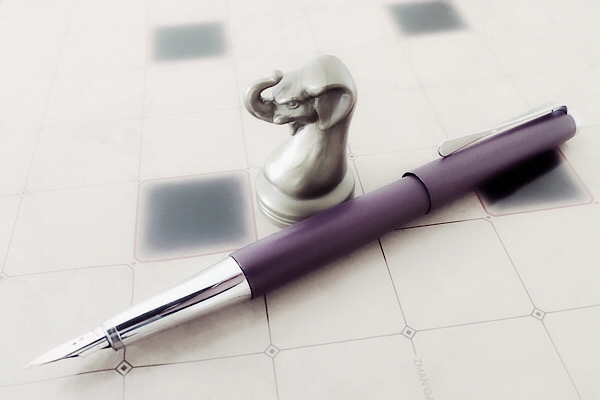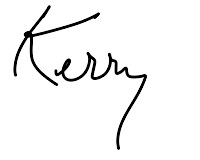Editorial
We started the new series of Abstract Games a little over one year ago and came close to meeting the old schedule of four issues in a year. Much of the content in these first four issues has been concerned with catching up on good games published in the last 17 years, since the original series of Abstract Games.
The astute reader will note that we tend only to cover games that we think are really good, which is the case even for the game reviews. We select only the best games to review! We do not want to write reviews to warn people away from games, and the best we can do is share our enthusiasm.
Inevitably, some of these games are so good that we are still playing them regularly. Games that we have continued to play that have been covered in the last few issues include Tak (AG17), Keil (AG18), and 3D XYZ Chess (AG19). Of course, there are others that need more attention, including Push Fight (AG18, AG19) and Carnac (AG19). The current issue covers two other games that we have played a lot over the last several months, NXS and Fenix. Also, Murus Gallicus and Blooms in the current issue are certainly worth investigating in some depth.
In the editorial of AG19, I spoke of the volume of new abstract games being developed, and the difficulty of giving each of the many excellent new games the proper attention that it deserves. I think the conclusion here is simple mathematics. With so many more new games coming to the attention of players, while the pool of players does not increase commensurately, there must necessarily be a higher turnover of games actually played. As time goes on, players devote a shorter and shorter attention span for new games. Of course, there are exceptions, and the high-turnover argument concerns only abstract games and their players in the aggregate. Nevertheless, the emergence of new abstract games faster than we can assimilate them is an interesting feature of the world of abstract games that is certainly more noticeable than 17 years ago. Of course, an advantage of the large number of new abstract games emerging is that among them a few must be really, really good, and these are the games we try to target in Abstract Games.
David Ploog's interview of Stephen Tavener in this issue, about Ai Ai and related matters, is very interesting in respect of the large number of abstract games emerging and how to decide which ones are worth playing. Stephen discusses using Ai Ai to decide on the number of "skill levels" a game has, which presumably is an indication of the depth of a game and the difficulty of mastering it. The number of skill levels in a game is perhaps one of many potential metrics that can objectively evaluate the extent to which a game satisfies certain desirable qualities. Of course, this approach can evaluate variants of new designs to help make decisions about the "best" variant. Indeed, in this issue, Pablo Schulman follows this approach with Tix and its variants, using Ai Ai to estimate the first player advantage (along with a number of other metrics). A desirable quality of two-player abstract games is that both players have roughly equal chances to win, and Pablo's research suggests a minor alteration in the rules of Tix itself to accomplish this goal.
Over the months we have thought carefully about whether or not to revive the game design contests that were an important feature of the original series of Abstract Games. We have decided not to go ahead with this for now. The situation in the world of abstract games is quite different to what it was at the start of the current century. At that time, Abstract Games had little competition, whereas now the BoardGameGeek and other sites give developers plenty of other options for presenting their games to the public, including a number of existing game design contests. Abstract Games still has a unique niche, but the design contests seem to be adequately dealt with elsewhere. We can always adjust and initiate the contests again if there is substantial interest from the readers.
In the meantime, stay safe and happy gaming!
The astute reader will note that we tend only to cover games that we think are really good, which is the case even for the game reviews. We select only the best games to review! We do not want to write reviews to warn people away from games, and the best we can do is share our enthusiasm.
Inevitably, some of these games are so good that we are still playing them regularly. Games that we have continued to play that have been covered in the last few issues include Tak (AG17), Keil (AG18), and 3D XYZ Chess (AG19). Of course, there are others that need more attention, including Push Fight (AG18, AG19) and Carnac (AG19). The current issue covers two other games that we have played a lot over the last several months, NXS and Fenix. Also, Murus Gallicus and Blooms in the current issue are certainly worth investigating in some depth.
In the editorial of AG19, I spoke of the volume of new abstract games being developed, and the difficulty of giving each of the many excellent new games the proper attention that it deserves. I think the conclusion here is simple mathematics. With so many more new games coming to the attention of players, while the pool of players does not increase commensurately, there must necessarily be a higher turnover of games actually played. As time goes on, players devote a shorter and shorter attention span for new games. Of course, there are exceptions, and the high-turnover argument concerns only abstract games and their players in the aggregate. Nevertheless, the emergence of new abstract games faster than we can assimilate them is an interesting feature of the world of abstract games that is certainly more noticeable than 17 years ago. Of course, an advantage of the large number of new abstract games emerging is that among them a few must be really, really good, and these are the games we try to target in Abstract Games.
David Ploog's interview of Stephen Tavener in this issue, about Ai Ai and related matters, is very interesting in respect of the large number of abstract games emerging and how to decide which ones are worth playing. Stephen discusses using Ai Ai to decide on the number of "skill levels" a game has, which presumably is an indication of the depth of a game and the difficulty of mastering it. The number of skill levels in a game is perhaps one of many potential metrics that can objectively evaluate the extent to which a game satisfies certain desirable qualities. Of course, this approach can evaluate variants of new designs to help make decisions about the "best" variant. Indeed, in this issue, Pablo Schulman follows this approach with Tix and its variants, using Ai Ai to estimate the first player advantage (along with a number of other metrics). A desirable quality of two-player abstract games is that both players have roughly equal chances to win, and Pablo's research suggests a minor alteration in the rules of Tix itself to accomplish this goal.
Over the months we have thought carefully about whether or not to revive the game design contests that were an important feature of the original series of Abstract Games. We have decided not to go ahead with this for now. The situation in the world of abstract games is quite different to what it was at the start of the current century. At that time, Abstract Games had little competition, whereas now the BoardGameGeek and other sites give developers plenty of other options for presenting their games to the public, including a number of existing game design contests. Abstract Games still has a unique niche, but the design contests seem to be adequately dealt with elsewhere. We can always adjust and initiate the contests again if there is substantial interest from the readers.
In the meantime, stay safe and happy gaming!

